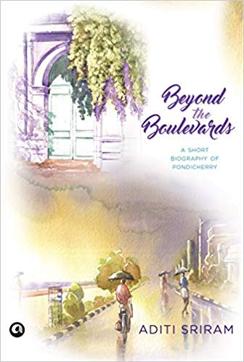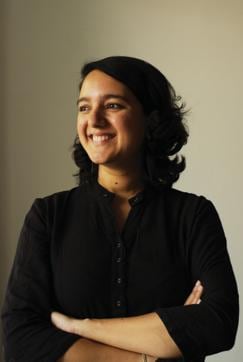Review: Beyond the Boulevards – A Short Biography of Pondicherry by Aditi Sriram
The city, which remains the perennial tourist destination in the larger Indian imagination, offers a combination of spirituality with the mirth of the sea

What is a city? How does one write about it? Cities exist in concrete geography but could cities also exist in imagination? Are cities constantly a work in progress, a space created in collaboration? I am often perplexed by the humongous possibilities that cities offer to a writer. In writing, that which is marginal in the city could be rendered visible thus creating new discourses around people and their lives. I am always disappointed when writings on a city do not offer insights that transcend the concrete or the merely geographical.
Pondicherry has long remained the exotic other owing to its diverse history, cross cultural colonial architecture, pristine beaches, and the Aurobindo Ashram, among other things. About three hours south of Chennai, this coastal city remains the perennial tourist destination in the larger Indian imagination offering an enviable combination of spirituality with the mirth of the sea. I remember accompanying my parents who were not devotees so to speak but were greatly attracted by the inexplicable charm of Aurobindo Ghose, a fellow Bengali. Before the trip, my father read up as many books as he could. They were further comforted by the prospect of vegetarian meals at the ashram. My otherwise perfectly carnivore parents turned vegetarian on such trips. It annoyed me a great deal but that’s a story for another day. We also did the customary trek to Auroville and returned fascinated by how little we understood.
Aditi Sriram’s Beyond the Boulevards – A Short Biography of Pondicherry packs in substantial research about the early Tamil settlement, the presence of the Portuguese, the Dutch, the Danes, and the French, and the final integration with India in 1954. Her labour in the archives is evident in the book. She mentions several books written on the city, identifies local scholars and historians, who could be your point of contact for any Pondy-specific study. There’s a part of the book where she admires the many libraries in this small city and reserves special praise for R Samyuktha, the Head Librarian of Pondicherry University who repeats her maxim that a library must have an ‘irresistible ambience’. Sriram also attempts to critically reflect upon the environmental challenges facing Pondy’s beaches, the seclusion of the ashram community, and the lure of the French visa.

But is there a format to write about Indian cities? Identify a motley lot, peep into their lives, find some idiosyncrasies and spin a narrative around it. Find a historian, an expat, throw in some salsa and food stories, and there, you have an account of the city; and lest we forget, our favourite flaneur references. Baudelaire used these ideations while writing about nineteenth century France and they gained international currency thanks to Walter Benjamin. I wonder why we can’t devise new ways and epistemologies to look at and think about Indian cities. Why can’t we look beyond the colonial? And isn’t the Indian city a new, peculiar being altogether? Why adopt the European lens at all? We ought to think about these pressing questions to avoid generic simplifications.
Read more: Crepes to curries: The changing tastes of Pondicherry
Beyond the Boulevards features a lot of history – who came, when, what happened, what was left behind, the ruins of Arikamedu, the legend of the Aayi Mandapam. Nobody is suggesting that these accounts are unimportant but where is the Pondicherry of the present? Is it only to be found in cafes, bars, salsa classes, old single screen theatres and young dames pining to go abroad to reunite with their beloveds? The book is silent on caste issues. I recently saw Chandala, Impure by the Pondicherry-based Indianostrum Theatre and it is the most searing indictment of caste performed on stage in recent memory. At an exhibition in Goa last year, I encountered the brilliant photography of a group of young, aspiring artists from Pondicherry who have quit their IT jobs to document the spaces they inhabit and engage in other community-centric work. The city accommodates all – some more than the other. It is often more fair to some than the rest. But the rest also exist and they too deserve a story.
Kunal Ray teaches literary & cultural studies at FLAME University, Pune






